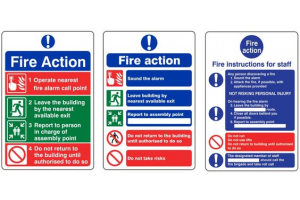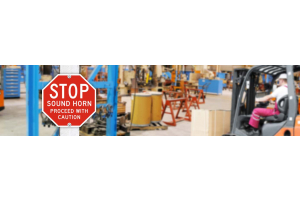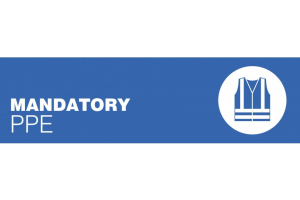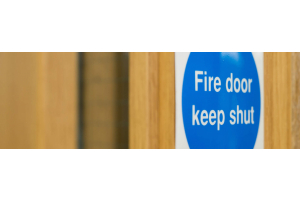
The following post details whatever you, as being an employer, may want to do to safeguard your staff from heat stress at work. It will likewise be beneficial to workers and their safety representatives. It lets you know about the hazards to the body through overheating when getting work done in hot conditions (for instance bakeries, compressed air tunnels, foundries and smelting operations) and provides practical tips on how to prevent it. It does not deal with issues involving thermal comfort at work. In numerous jobs heat stress can be an issue throughout the year however this post also applies throughout the hot summer season where there could be an elevated possibility of heat stress for a few people. You including your workers needs to be aware of how to work safely and securely in heat, the factors which could bring on heat stress, and how to limit the risk of it taking place.
What exactly is heat stress?
Heat stress happens when the body’s method of managing its internal heat range begins to fail. Air temperatures, work rate, humidity and work garments are common factors which could trigger heat stress. It might be apparent to somebody passing through the workplace that there are a risk of heat stress. So how exactly does your body respond to heat? Your body reacts to heat by means of increasing the blood circulation to the skin’s surface area and also sweating. This cools our bodies as heat is transported towards the surface area from inside by the increased blood flow and also perspiration evaporates. Temperature may also be lost by radiation as well as convection from the body’s surface area.
Typical example of a heat stress condition: Somebody dressed in protective clothes as well as undertaking heavy work within hot and humid conditions might be in danger of heat stress mainly because:
- Sweat evaporation is restricted by the type of clothes and also the humidity in the natural environment.
- Heat will be generated within the body because of the work rate and if not sufficient heat is misplaced deep body temperature will probably increase.
- As deep body temperature increases our body responds simply by escalating the level of sweating produced, which might result in dehydration.
- Heart rate likewise heightens which places further pressure on the body.
- an incapacity to focus;
- muscle cramping;
- heat rash;
- severe thirst – a late symptom of heat stress;
- fainting;
- heat fatigue – exhaustion, giddiness, feeling sick, headache, damp skin;
- heat stroke – warm dried out skin, confusion, convulsions and also inevitable loss of consciousness. This is actually the most severe condition and can also lead to death if not recognised early on.
- glass and also rubber manufacturing plants;
- mines;
- compressed air tunnels;
- conventional plus nuclear power stations;
- foundries as well as smelting operations;
- brick-firing as well as ceramics plants;
- boiler areas;
- bakeries as well as kitchen areas;
- laundries.
- work rate – the tougher somebody works the greater body heat these people create;
- working environment – this consists of air temperature, humidity, air movement as well as effects of working in close proximity to a heat source;
- worker’s clothes as well as respiratory protective gear – may well imply that sweating along with other means of the body managing its temperature are much less efficient;
- worker’s age, build as well as medical factors – may possibly affect an individual’s threshold.
- Control the temperatures utilising engineering solutions, such as change the processes, use fans or even air conditioning, make use of physical barriers that reduce exposure to radiant heat.
- Provide technical aids wherever possible to minimise the work rate.
- Regulate the duration of exposure to hot environments by:
- allowing personnel to enter only if the temperature is beneath a set degree or at much cooler times of the day;
- issuing permits to work which define the length of time your employees ought to work in conditions where there is a danger;
- providing routine rest breaks along with rest amenities inside much cooler conditions.
If your body is actually developing far more heat than it may reduce then your deep body temperatures will probably continue rising. Ultimately it reaches a point where the body’s control systems commence to fail. The signs and symptoms could possibly get worse the more time somebody is still working in the same situations. What are the effects of heat stress? Heat stress could affect people in various ways plus some individuals are much more vulnerable to it in comparison with other people. Common symptoms tend to be:
In these kinds of industrial sectors doing work in the heat could be the norm. For some it will likely be encountered much less often according to the kind of work being done as well as modifications in our working environment, for example seasonal changes in outdoor air temperatures can easily contribute considerably to heat stress. Exactly what do I have to do about heat stress? In time individuals can adjust to hot situations by sweating as well as changing their behaviour to try to cool-down, such as removing clothes, consuming cool refreshments, fanning themselves, sitting in the shade or possibly a cool spot, and/or decreasing their work rate. Nevertheless, in several work situations such adjustments will not be feasible, for example while protective clothing needs to be put on. Where there is a prospect of heat stress happening you need to consider this whenever undertaking your risk assessment.
Exactly what do I need to look at in the risk assessment? While undertaking your risk assessment, the main aspects you should consider are:
Firstly, speak with the employees concerned and their safety associates (if there are any in your workplace) to find out if they are suffering early symptoms of heat stress. If you have a problem, you may have to obtain help from other individuals who will be more skill-full in figuring out the risk from hot environments, for example occupational hygienists or occupational health care professionals. How do i reduce the risks? Eliminate or even reduce the sources of heat wherever feasible:
Prevent dehydration. Working in a hot surroundings leads to sweating which assists in keeping people cool yet suggests losing essential water that needs to be replaced. Supply cool drinking water in the workplace and also motivate staff to drink it often in small amounts just before, in the course of (wherever possible) and after working. Provide individual protective gear. Specialised personal protective clothes are available which could include personal cooling systems or even breathable materials. Using some protective clothes or perhaps respiratory protective apparatus might raise the possibility of heat stress. Provide training for your employees, specifically new and also young staff, informing all of them about the risks of heat stress related to their work, what signs and symptoms to look out for, safe working procedures as well as emergency procedures.
Allow employees to acclimatise to their surroundings as well as determine which workers are acclimatised or evaluated as healthy to function in hot conditions. Identify workers that are a lot more vulnerable to heat stress due to a health problem, condition or medicine that may contribute to the early start heat stress, eg women that are pregnant or even individuals with heart conditions. You might need guidance from an work-related health professional. Keep track of the healthiness of workers vulnerable. Where a continuing threat remains after putting into action as many control actions as factible, you may want to monitor the health of staff subjected to the risk. You need to then seek advice from your occupational health professional. If you do follow the advice you are going to normally be accomplishing enough to conform to the law. Health and safety inspectors strive to secure conformity using the law and might make reference to this particular advice.




